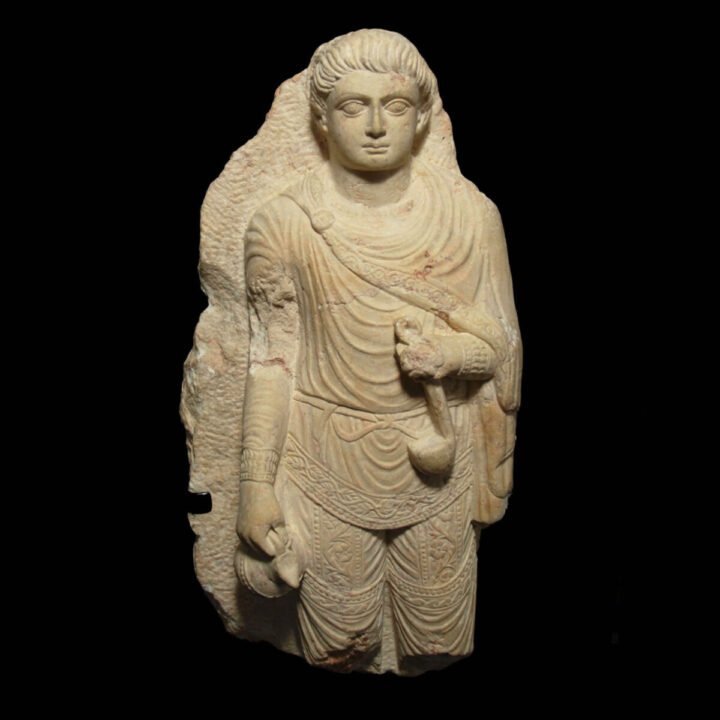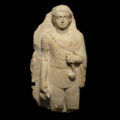Limestone Relief of a Servant from a Palmyran Sarcophagus
Culture: Roman/Palmyra
Period: 220-240 A.D.
Material: Limestone
Dimensions: 43 cm high
Price: Sold
Ref: 3600
Provenance: French private collection prior to 2000, thence in a Californian collection. 2009 with Royal Athena Galleries, New York. Published in “Art of the Ancient World”, Vol. XX, p. 22 no 33. Last in the US art market.
Condition: An old chip on the right upper arm as seen on the picture. A stabilized crack across the upper body. Otherwise very beautifully preserved.
Description: Large fragment of the lower part of a limestone sarcophagus from Palmyra depicting a young servant in a traditional Parthian costume. He looks straight ahead, has a strong neck and even, fine facial features with the large eyes with elaborate irises and pupils that are typical for Palmyran art. His short, stringy hair is coiffed into the forehead. The young man wears a cloak that is knotted on his right shoulder and falls in folds over the left side of his body. Underneath a short tunic with a belt around the belly, which semi-circularly finishes with a hemline, which is adorned with leaf tendrils. On the wrists the vestment is decorated with dots- and wave decoration. The young man wears trousers in oriental tradition, which are decorated with vertical decorative ribbons depicting tendrils and floral motives, finishing again with dots- and wave bands. The servant holds in his left hand a simpulum in front of his belly. His right hand hangs down and holds a wine jug decorated with dotted rows. The extremely detailed and finely crafted, very sculptural relief is one of a series of servant figures that adorned the lower long side of a sarcophagus. The depiction of the deceased laid over the entire length on the lid of sarcophagus in banquet position on a kline. The relief is published in “Art of the Ancient World”, Vol. XX, p. 22 no 33. See for the depiction of an almost complete sarcophagus the one in the Palmyra Archaeological Museum with the inventory number 2677B/8983. As well as for the sarcophagi in Palmyra: Malcolm Colledge “The Art of Palmyra”, London 1976, p. 77-78. Mounted.






